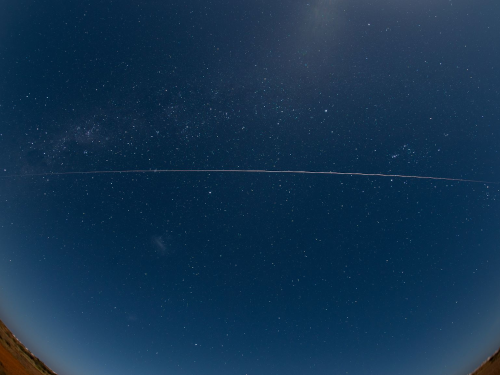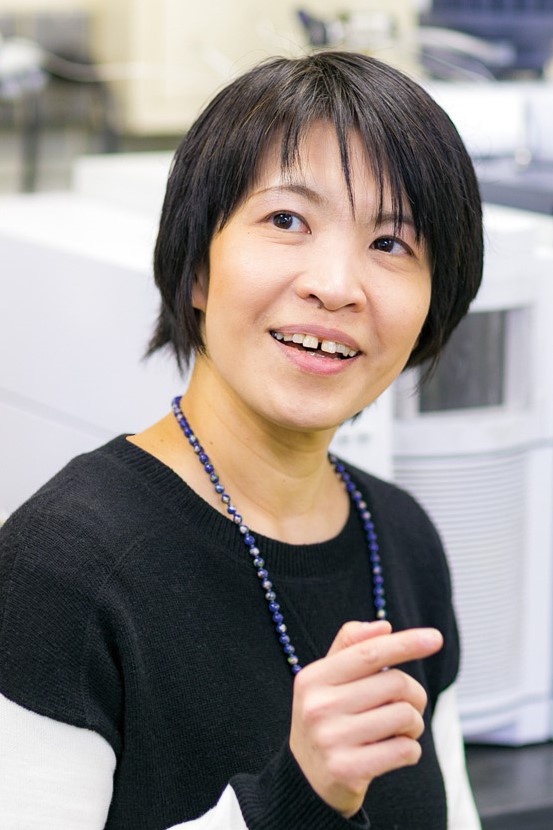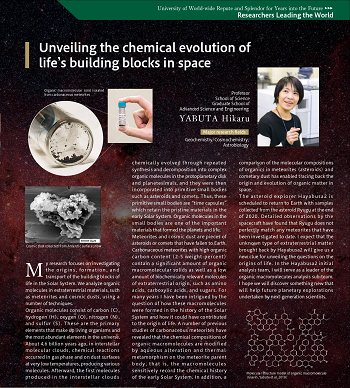E-mail:koho*office.hiroshima-u.ac.jp (Please replace * with @)
By Hiroshima University Department of Public Relations
With Japanese space agency JAXA’s retrieval of Hayabusa2’s capsule, an HU cosmochemist and her colleagues are gearing up for the initial analysis of the samples taken from asteroid Ryugu to see what it may reveal about life’s origins.

This December 6, 2020 photo shows the image of the re-entry of the Hayabusa2 capsule. The spot of light moving from right to left on the screen is the re-entry capsule, which looks like a fireball as it passes through the atmosphere. Credit: JAXA
After six years, the Japan Aerospace Exploration Agency’s (JAXA) asteroid explorer Hayabusa2 has delivered the re-entry capsule to Earth on Sunday, December 6. The capsule is expected to contain the samples collected from the asteroid Ryugu.
Professor Hikaru Yabuta from Hiroshima University’s Graduate School of Advanced Science and Engineering — who has been involved in the Hayabusa2 project since 2011 — will lead the organic macromolecules analysis sub-team during the initial sample analysis that will start around next summer.
READ: Meet Hikaru Yabuta
Yabuta has been focused on researching the origins, formation, and transport of the building blocks of life in the Solar System through the analysis of organic molecules in extraterrestrial materials, such as meteorites and cosmic dust. Organic molecules, which consist of carbon (C), hydrogen (H), oxygen (O), nitrogen (N), and sulfur (S), are the primary elements that make up living organisms. Meteorites are thought to have delivered these organic molecules to Earth.

Asteroids as ‘time capsules’
In a story published in this year’s HU Prospectus, Yabuta shared how chemical reactions that occurred about 4.6 billion years ago in gas phase and on dust surfaces at very low temperatures produced the first molecules. These first molecules chemically evolved through repeated synthesis and decomposition into complex organic molecules and were then incorporated into primitive small bodies such as asteroids and comets.
According to her, these primitive small bodies are like “time capsules” that retained the pristine materials in the early Solar System. Meteorites and cosmic dust are pieces of asteroids or comets that have fallen to Earth.
“For many years I have been intrigued by the question of how these macromolecules were formed in the history of the Solar System and how it could have contributed to the origin of life,” she said.
“A number of previous studies of carbonaceous meteorites have revealed that the chemical compositions of organic macromolecules are modified by aqueous alteration and thermal metamorphism on the meteorite parent body, that is, the macromolecules sensitively record the chemical history of the early Solar System.”
The Japanese cosmochemist said that detailed observations by the spacecraft found that Ryugu does not perfectly match any meteorites that have been investigated to date.
“I expect that the unknown type of extraterrestrial matter brought back by Hayabusa2 will give us a new clue for unveiling the questions on the origins of life,” she said.
“I hope we will discover something new that will help future planetary explorations undertaken by next-generation scientists.”
The spacecraft Hayabusa2 will continue a new, long-term mission to the asteroid 1998 KY26.

We asked Professor Yabuta about her thoughts on organic cosmochemistry and the Hayabusa2 project.
Hiroshima University Public Relations Group

 Home
Home














